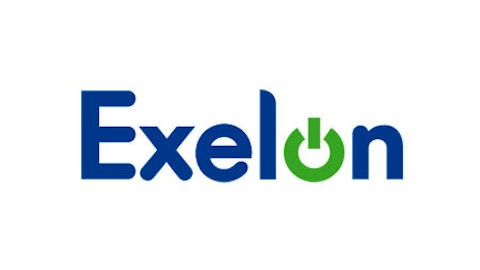Duke Energy Corp (NYSE:DUK) reported earnings on Tuesday, beating quarterly earnings estimates for the eighth consecutive quarter. But dollars don’t always tell the whole story, and Duke’s rough-and-tumble year could keep it in bear country for the foreseeable future. Today I’ll look at what this utility’s been up to, see where it’s headed, and make my call on Duke’s 2013.

On the top line, Duke pulled in $5.7 billion in sales for Q4 2012, 3.5% higher than Mr. Market had expected. The company managed to hang on to a sizable chunk of that change, recording adjusted diluted earnings per share of $0.70, a solid 9% above analyst estimates.
For 2012 overall, Duke missed top-line expectations of $20.1 billion in revenue by $500 million. But lackluster sales were a sectorwide trend, and expectations for recent mergers seem to have been set high. After merging with Constellation Energy in March, Exelon Corporation (NYSE:EXC) missed on sales by a whole 22 %.
The good news? Duke hit its mark on earnings per share. The utility recorded 2012 adjusted diluted EPS of $4.32, tipping the upper end of its $4.20-$4.35 guidance. Looking ahead, Duke’s remaining aloof and holding off on 2013 numbers until its Feb. 28 analyst meeting.
A position to transition
If you’re investing in Duke Energy today, it should be based on what the utility will look like tomorrow. The company underwent a major merger with Progress Energy in July, making it the largest utility in the U.S. in terms of assets. It serves more than 7 million customers across the Southeast and Midwest, putting it in a seemingly prime position for a plethora of profit. But there are two main issues: a botched merger and a coal-centric outdated energy portfolio. Let’s see how Duke’s doing.
After an 18-month approval process and two state investigations, Duke and its CEO, Jim Rogers, seem to finally be out of the hot seat. The North Carolina Utilities Commission settled its investigations, Rogers will step down at the end of 2013, and Duke will be in a much better place to maneuver for a $440 million rate increase. Speaking with the Charlotte Observer in January, Rogers reflected: “The birthing process of the creation of the largest utility in the country has been quite difficult. … I think the baby is going to be beautiful.”
The second issue, Duke’s coal-centric portfolio, is not so easily settled. Fortunately for the utility and its shareholders, Duke is making major strides to reorient its energy generation toward cleaner, more efficient, and/or cheaper sources.
Duke brought three new North Carolina power plants online in 2012, setting itself up to retire 3,800 MW of coal capacity by the end of the year. By 2015, the utility plans to retire up to 6,800 MW of inefficient coal plants. Duke also tagged on five new wind farms and three solar farms in 2012, adding 650 MW to its 1,700 total MW of wind and solar generation capacity .
This multiyear modernization project doesn’t come cheap, and Duke has already spent $7 billion to get to where it is today. Over the next decade, the utility expects to dish out an additional $5 billion to $6 billion.
But the company recognizes that spending today will mean saving (and earning) tomorrow. During the Q&A portion of the earnings call, Rogers went so far as to make a direct jab at one of his company’s competitors: “Our modernization plan is ahead of most utilities in the country. If you look at The Southern Company (NYSE:SO) today, they are just now starting down the road of modernization of their generation fleet.” I fact-checked Rogers, and he’s right. In the past three years, Southern has spent 26% of its sales on capital expenditures, while Duke has doled out 32%.
Priced for perfection?
Duke’s stock outperformed its sector for 2012 and has risen a whopping 32% since its merger announcement in January 2011. With an above-average 4.4% dividend yield and some of the best margins around, let’s see how its valuation compares with that of its peers:
| Company | Price-to-Sales Ratio | Price-to-Tangible Book Value Ratio |
|---|---|---|
| Duke | 2.80 | 2.00 |
| Exelon | 1.15 | 1.42 |
| Southern Company | 2.33 | 2.07 |
| FirstEnergy Corp. (NYSE:FE) | 1.05 | 2.43 |
| Atlantic Power Corp (NYSE:AT) | 2.46 | -23.94 |
Sources: YCharts and Yahoo! Finance.
First Energy is in the bargain bin for sales, while Atlantic Power is dirt cheap in terms of its tangible book value. But First Energy still relies on coal for 64% of its generation, and Atlantic’s unsustainably high dividend make me question its current long-term value. Duke’s priciness plays through when you consider its sales, but its price-to-tangible book value ratio toes the middle line. The company isn’t cheap, but it’s not priced for perfection, either.
Dastardly Duke
When I wrote about Duke’s Q3 earnings, the wounds from merger madness were too fresh for me to feel comfortable judging this utility’s future. But with legal battles behind it and a solid fourth quarter, I’m ready to make an “outperform” call on my Motley Fool CAPS page. Duke is setting itself up for better effectiveness and efficiency, and I’m looking forward to seeing where it heads in the next few years.
The article Duke Energy Earnings: Is Its Dividend Worth It? originally appeared on Fool.com and is written by Justin Loiseau.
Fool contributor Justin Loiseau has no position in any stocks mentioned. You can follow him on Twitter, @TMFJLo, and on Motley Fool CAPS, @TMFJLo. The Motley Fool recommends Exelon and Southern.
Copyright © 1995 – 2013 The Motley Fool, LLC. All rights reserved. The Motley Fool has a disclosure policy.





